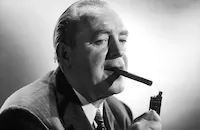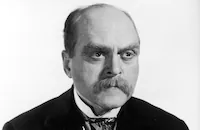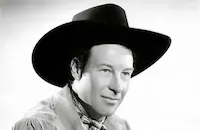Twenty Million Sweethearts

Brief Synopsis
Cast & Crew
Ray Enright
Pat O'brien
Dick Powell
Ginger Rogers
The Four Mills Bros.
Allen Jenkins
Film Details
Technical Specs

Synopsis
Talent scout Rush Blake has gone through his advance from Consolidated Broadcasting Co. without finding a single new act. After he is fired, he goes to a restaurant looking for friends who might loan him train fare out of town, and discovers singing waiter Buddy Clayton, who draws a large female audience. Sure that he will be equally successful on the radio, Rush convinces Buddy to sell his car and come to New York with him. There Rush wangles an audition for Buddy, but he sings the same barroom song that was so popular at the restaurant and fails the audition. Afterward, Peggy Cornell, the "Cinderella Girl," visits Buddy at his hotel. Buddy sings her a song that children's radio performer Pete has just written, and to everyone's surprise, his voice is beautiful. When Sharpe, the head of the station, refuses to give Buddy another audition, Peggy pretends to faint on her own show, "The Carlotta Soap Program," and Buddy takes her place. Mrs. Brokman, the wife of the sponsor, loves his voice, as does everyone who hears it. Soon Buddy is the new star of "The Carlotta Soap Program," and Peggy, whose contract was bought out, is on her way to being a Broadway star. When news of Buddy's engagement to Peggy makes the papers, Sharpe is afraid that women will lose interest in Buddy if they know he is married. By lying to both Buddy and Peggy, Rush manages to break up the engagement, but Brokman now thinks that Buddy is involved with a married woman, thus compromising the purity of his soap. Contrite, Rush finds him a job on Long Island, luring Peggy, Sharpe and the Brokmans to hear him. When Peggy and Buddy sing a duet, it is clear that no one minds if they get married after all.

Director
Ray Enright
Cast

Pat O'brien

Dick Powell

Ginger Rogers
The Four Mills Bros.

Allen Jenkins

Grant Mitchell

Joseph Cawthorne
Joan Wheeler

Henry O'neill
Johnny Arthur
Jim Hollingwood
Eddie Bartell
Henry Taylor
Grace Hayle
Oscar Apfel
Billy West
Bob Perry

William B. Davidson
Rosalie Roy
Eddie Foster
Billy Snyder
Matt Brooks
Morris Goldman
Milton Kibbee
Harry Seymour
John T. Murray
Sam Hayes
Dick Winslow
Leo Forbstein
Eddie Shubert
George Chandler
Sam Mcdaniel
George Humbert
Diane Borget

Gordon Elliott

Eddie Kane
Larry Mcgrath
Crew
Al Alborn
Sam Bischoff
Al Dubin
Warren Duff
Leo F. Forbstein
Esdras Hartley
Sid Hickox
Gordon Hollingshead
Clarence Kolster
Stanley Logan
Paul Finder Moss
Orry-kelly
Don Redman
Harry Sauber
Jerry Wald
Harry Warren

Photo Collections
Film Details
Technical Specs

Articles
Twenty Million Sweethearts
Thanks to her scene-stealing turn as Fred Astaire's dance partner in Flying Down to Rio (1933), Rogers was already on the fast track to stardom. With her co-star already committed to perform the Cole Porter musical The Gay Divorce in London and New York, the studio kept her busy before putting the two in the co-starring vehicle audiences and exhibitors were demanding. And, as was customary in the studio era, with no major productions at RKO demanding her participation, they were happy to loan her services to Warner Bros. for Twenty Million Sweethearts. After all, her supporting performances in Warner's 42nd Street and Gold Diggers of 1933 (both 1933), had helped bring her to the attention of RKO management.
The loan-out was hardly a problem for Rogers, who knew that screen exposure in a variety of films was the ticket to stardom. In addition, the film provided a reunion with Powell, whose talent and good looks had impressed her when he played banjo as part of the orchestra for a singing engagement she had in Indianapolis. At the time, she had thought his good looks and youthful charm were a natural for the movies and was happy to find her prediction come true when Powell quickly hit the big time as the star of several lavish Busby Berkeley musicals at Warners.
The vehicle that brought them together was the first story credited to writer Jerry Wald, who would go on to produce such classics as Mildred Pierce (1945) and From Here to Eternity (1953). Like many other studios, Warner Bros. dealt with competition from radio by making films about the medium that both poked fun at it and even borrowed some of its stars. The jokes in Twenty Million Sweethearts were aimed at nervous executives and sponsors who fear that a real-life romance between Rogers and Powell will alienate listeners who view them as surrogate sweethearts. The talent included The Mills Brothers, Ted Fio Rito and his band, female singers The Debutantes and a trio of impressionists billed as The Three Radio Rogues. The latter's repertoire included spoofs of Bing Crosby, Rudy Vallee, Amos 'n' Andy and, though the group's members were all male, Kate Smith.
Though Powell and Rogers did much of the singing, they really weren't expected to carry the plot. That honor went to Pat O'Brien, the fast talking Irish-American actor best known for his films with friend James Cagney. On his own, he could easily carry a picture, impressing critics and audiences with his comic antics as he sets out to turn singing waiter Powell into a radio star, then tries to squelch his romance with Rogers, and finally brings the two back together when his conscience conveniently takes over in time for the film's third act.
The songs came from Harry Warren and Al Dubin, the team who had brought the studio its first big musical success, 42nd Street. For Twenty Million Sweethearts, they gave Powell a hit with "I'll String Along with You," which he sang with Rogers, while giving Rogers her one big number in the film, "Out for No Good," a comic love song anticipating the sprightly songs she would introduce in her later musicals with Astaire.
Twenty Million Sweethearts opened to solid reviews, though some writers complained that the film didn't feature any of Berkeley's intricately choreographed dance numbers, which had become the standard for Warner Bros. musicals at the time. Although the lion's share of the notices went to O'Brien and Powell, Variety clearly had noticed Rogers' earlier films, writing "Miss Rogers is away from comedy on this stint and appears more pleasantly placed as a straight ingénue. A versatile young lady, she looks exceptionally well and plays pleasantly." It would take only four more films for the first Astaire-Rogers vehicle, The Gay Divorcee (1934), to prove that she could be more than just decorative and amusing on screen. Fifteen years later, Twenty Million Sweethearts would prove a solid vehicle for another rising blonde songstress, Doris Day, when she starred in the 1949 remake, My Dream Is Yours.
Producer: Samuel Bischoff
Director: Ray Enright
Screenplay: Warren Duff, Harry Sauber
Based on the story "Hot Air" by Paul Finder Moss, Jerry Wald
Cinematography: Sid Hickox
Art Direction: Esdras Hartley
Music: Leo F. Forbstein
Cast: Pat O'Brien (Rush Blake), Dick Powell (Buddy Clayton), Ginger Rogers (Peggy Cornell), The Four Mills Bros. (Themselves), Allen Jenkins (Pete), Grant Mitchell (Sharpe), Joseph Cawthorne (Mr. Brokman), Henry O'Neill (Lemuel Tappan), Milton Kibbee (Announcer), Leo Forbstein (Brusiloff), George Chandler (Johnny Klinger), Charles Lane, Dennis O'Keefe (Reporters).
BW-90m. Closed Captioning.
by Frank Miller

Twenty Million Sweethearts
Quotes
Trivia
Notes
The Three Radio Rogues: Jim Hollingwood, Eddie Bartell and Henry Taylor, performed vocal imitations of Bing Crosby, Morton Downey, Rudy Vallee, Ben Bernie, Arthur Tracy, Joe Penner, Kate Smith, and Amos 'n Andy in the film. Before its release, the film was entitled Rhythm in the Air, On the Air and Hot Air. A remake entitled My Dream Is Yours was filmed by Warner Bros. in 1949 with Doris Day and directed by Michael Curtiz.















